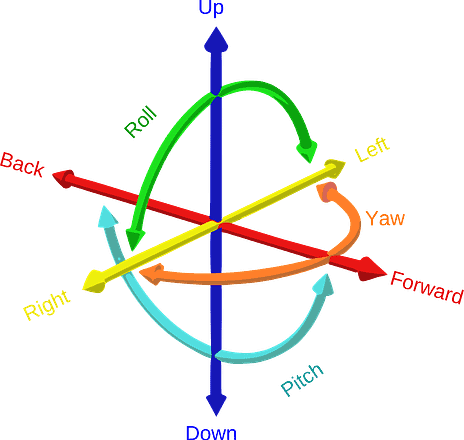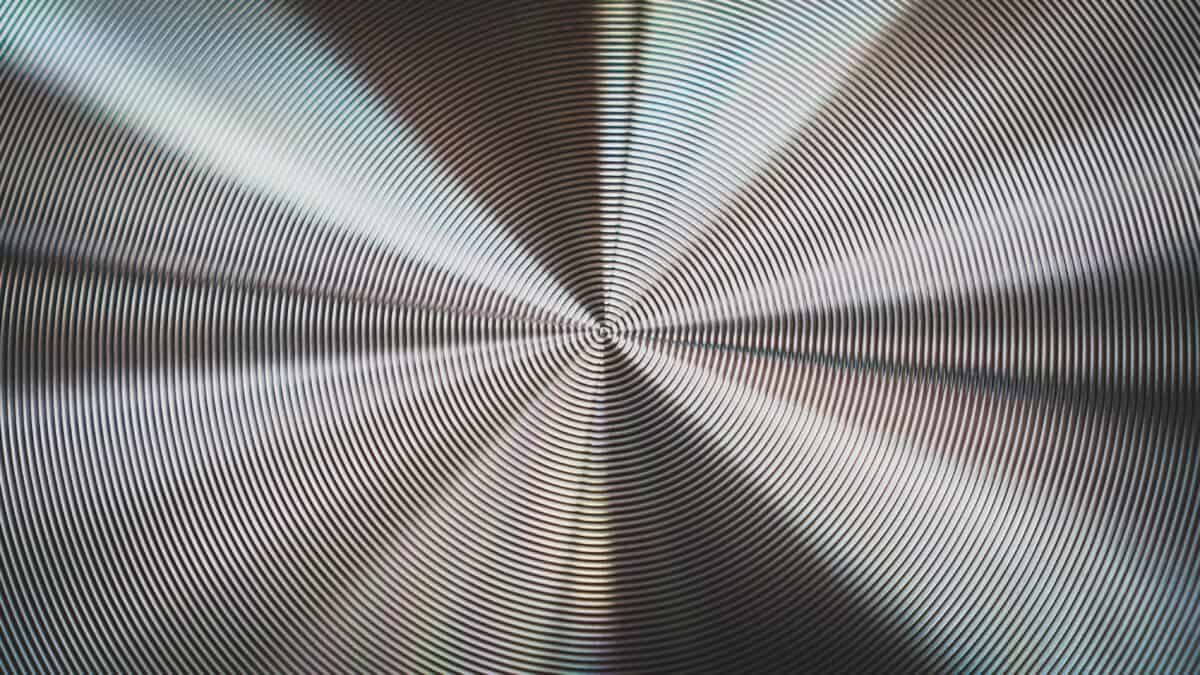Go Forth and Prosper
“Go forth” is a daily devotion we all pay allegiance to, just by the virtue of being human, even if we are unaware of doing so. For the nature of each human life is to orientate forward, and face that which is in front of us. The forces of nature and deep time have shaped the human animal to look ahead as a primary sense-making strategy. This connects us and unifies us. In many senses, the ability to move forward in life is a blessing.
Consider that:
+We are bipedal primates whose most efficient gate pattern is direct. We are designed to walk directly ahead of us most of the time.
+We are predators, who use our binocular forward-facing vision to sight and track prey. We share this in common with many other predators.
+We are uniquely equipped structurally, to open ourselves forward, thus exposing our most vulnerable parts (genitals and organs), to the world. People see us and see them from the front.
We have a direction we prefer, and it is both a great strength and also potentially stifling for our physical health, as well as limiting in our ability to make sense of the world; perception is largely a matter of vantage point, and we all have blind-spots in life. The more we orientate in one direction, the more blind spots we have.
The human sense-making process, whether in dealing with difficult emotional experiences from the past, crafting a new business trajectory for the future or traversing a forest trail in the moment all overlap, and all have sense of directionality.
You see…there is a tendency in human neurology to treat that which is directly in front of us as something in “active processing”, and that which is behind us as it were in “cold storage” or “behind us”. One might say that they are “looking forward” to an event occurring in a few weeks or “leave the past behind us” when wanting to “move forward with life”. This polarity shines through in the notion of being “centered”, when we find ourselves present in this moment.
The Heavens and The Earth
The vertical axis, or “up and down”, is another human bias that we move within daily as well. Every time we sit or get up, move objects on or off the ground, or for those of us who are a bit more movement inclined… climb, we are playing with the vertical axis.
Yet the vertical axis is also one of the great arcs of mystical and esoteric teachings. It is perhaps one of the most common notions in wisdom traditions the world over, to hold that there is some kind of vertical structure to the nature of spirit.
Some version of heaven (upper/heaven/sky) and earth (lower/underworld/roots), is a core theme of human spirituality.
What I find most interesting about this, is the way a tradition relates to directionality is quite telling of their value structure...transcendent traditions tend to relate to reality as top-down phenomena, where this world is the lowest on the totem pole.
The Kabbalah is such a tradition, who worships a sky god of ancient Israel (this is why the Abrahamic god is an old man in the sky looking down), and in its view, the reality of life is structured into ten dimensions represented in what they call “The Tree of Life” (pictured below).
The last sphere way at the bottom is where we are at, and in this view the divine descends into matter.

In contrast, the I Ching, a profound book of wisdom with its roots in shamanic bone reading, presents a cosmology of the universe that is quite different. The primary language of the I Ching is hexagrams, (which are glyphs made of six lines), and in many ways, they represent the blueprints of reality.
The I Ching is not transcendent, but inclusive of nature and this is reflected in the fact that hexagrams are built from the bottom up. It is as if the divine is bubbling up like a great spring, nourishing the world into being. The I Ching also holds a deep multidimensional sense of the world reflected in its multi-directional and multidimensional map (pictured below).

Baguazhang, a martial art built from the dynamic architecture I Ching is known for multi-directional movement; in fact that is what makes Baguazhang powerful.
Multi-directional Maps
All this is interesting, and fascinating, pointing toward how direction, movement, senses and body all interrelate to help humans make sense of our place in the world.
The critical point here though, is that the way YOU relate to directionality alters your sense of the universe you live in, how well your mind and body function, and what blind spots you have.
Many indigenous traditions understood this, and anchored their practices in maps of the universe that were multi-directional.
+When you encounter traditions that are working with the four, eight or ten directions (including up and down) you encounter amore omnidirectional relationship to the universe. They re-orientate us in space-time and broaden our scope out of the narrow confines of perpetual forward.
+When you witness complex dances or deeply involved rituals that create arcs, circles, or spirals, you feel this in action. This is largely lost in today’s world, which is the epitome of forward-focused, falling into their phones and laptops, seeking the next new thing. This is progress at all cost.
+While human architecture faces forward, we live in a multi-directional world and the forces that act upon us do so through a multitude of vectors that are morelike a bowl of cooked spaghettithan a straight line.
In many of the world’s indigenous traditions, some of the most powerful deities are the ones who straddle multitudes at once, for their vantage point is both broad and narrow, and thus their knowing is vast.
I grew up in a tradition with its roots on the African continent named Lucumi (known as Santeria to some) and one of the most revered and respected deities is named Esu (pronounced Eh-Shuu), and he a being of the crossroads (a place of multi-directionality).

The Crossroads
He is in all places at once, as he is both young and ancient, big and small, here and there, everywhere and nowhere. Esu is a road revealer, a divine messenger, and must be called before work with any other deity can occur…he opens the way. Interestingly, one of the main qualities he teaches is that we all have blind spots, and to take a more inclusive orientation towards reality.
——————————————————————————————————
The Directionality Bias is Alive and Well In Modern Culture
While there are many ways to explore multi-directionality, from cosmological maps, to rituals, to internal alchemy, in my opinion, there is something that only movement practice can do. It helps us deeply embody a sense of the universe that travels across diverse perspectives of reality.
And this brings us to our own personal relationship to direction and how these biases we all have are deeply reinforced in popular movement culture and society as a whole. Think about it, most of what people do in gyms is either focused on:
+Up and down movements.
+Forward and backward movements.
+Linear single directional movements.
And this is the same thing most people in modern civilization do as well.
+Get in and out of beds, chairs and cars.
+Sit at desk or engage with devices.
+Walk in straight lines between those two anchor points.
Many movement teachers have started to remedy this, and we have seen a huge surge in multi-directional movement in the recent years, which is great! We need it. One of the maps that originally broke me out of the linear movement trap worked with a concept from aeronautics called The Six Degrees of Freedom, pictured below. Humans can and do move within all those vectors, and it’s lights your nervous system up like a Christmas tree to flow through all them in creative succession.

These days I am really appreciating and recommending exploring movement, sensation and perspective across as many vectors as possible, and at least some of the time, that it be done in an explorative and not rote manner.
My personal practice has progressively deepened into this principle of creative exploration of multi-directionality these days. I would like to invite people called to begin exploring this idea (if they have not yet done so), with a movement practice called “Plastiques”, linked below.
Multi-Directional Medicine
The benefits of having at least some multi-directional practices are many, and a few of them in my estimation are:
1. Regulating Organ Function & Improving Joint Health
For people interested in improving their health, exploring practices like Plastiques, or other multi-directional disciplines is profoundly good for the health of organs, connective tissues and the nervous system.
Organs need movement for the sake of circulation, waste removal and for their ability to communicate with the nervous system more fully. If for example you have health challenges in a particular organ (say your stomach for example), then choosing that location in your body and putting it through a Plastiques session for 5-10 minutes non-stop can do amazing things for the health of your stomach.
Working the whole spine in this way, mapping across the cavity of your viscera, deeply massaging all the organs and improving the spines ability to transmit signal between them and the cranial brain is deeply healing.Our propensity to orientate up, down and forward limits the range that organs move within and modern movement cultures allegiance to big, linear movements only reinforces this.
Organs remain contracted, stagnant and stifled.
The same could be said about any joint or connective tissue giving you trouble. While on it’s own, it may not solve the whole issue you are dealing with, taking any joint through multi-vectored, playful and pain free exploration is a freaking game changer. It allows for really deep work to occur, and to get into all the nooks of of joints possible articulation, while changing it’s relationship to your center-line.
2. Regulating The Nervous System
If we approach the process in a spontaneous and organic way, it allows for us to auto-regulate our nervous system. We basically get to feel into our body, and work out the kinks or “tune the instrument” as it were. Instead of forcing the system into some predetermined pattern, we allow our system to explore itself.
3. Road Opening
Road opening is concept that comes from a variety of indigenous traditions, and is often deployed as a magical strategy, however it can do a variety of things depending on where it is deployed.
At a fundamental level, it means creating a way where one did not exist before, or said another way…opening up new possibilities.
A Plastiques practice does this extremely well. You “find and follow” a spontaneously emerging thread that opens new movements you did not even know you could do.
This is a core medicine of multi-directionality: access to ways, vantage points, and movements across a multitude of possibilities. This is the magic of shifting ones perspective.
[Feature Photo by Fikri Rasyid on Unsplash.]

